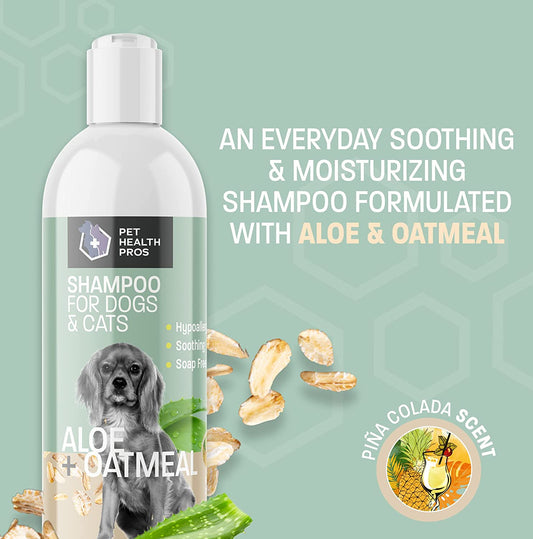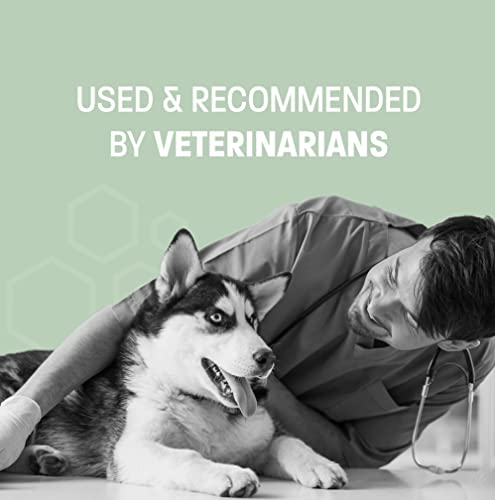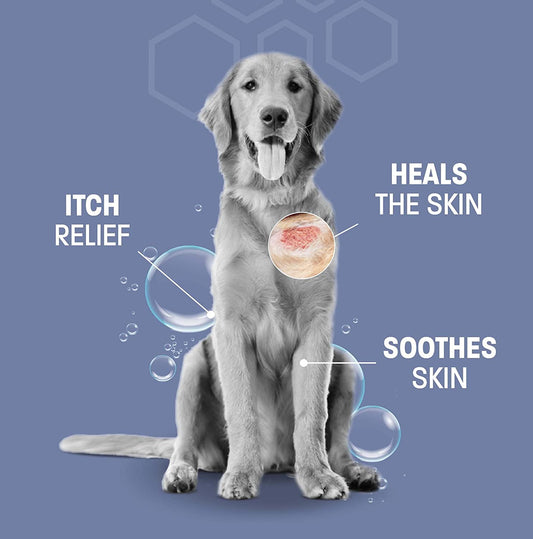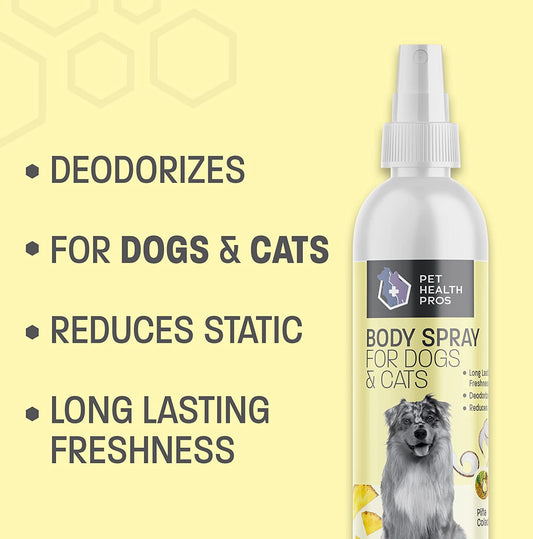Ringworm in dogs can be a real headache for pet owners. It's not actually a worm, but a pesky fungus that loves to mess with your dog's skin. You'll want to catch it early to prevent it from spreading, not just to other pets, but to humans too. Understanding the stages of ringworm in dogs can help you spot the signs and take action quickly. This guide will walk you through everything from the first symptoms to treatment options, so you can keep your furry friend healthy and happy.
Key Takeaways
- Ringworm is a fungal infection, not a worm.
- Early detection is crucial to prevent spreading.
- Symptoms can be mistaken for other skin issues.
- Treatment includes topical and oral medications.
- Hygiene and cleaning are key to preventing recurrence.
Recognizing the Early Signs of Ringworm in Dogs
Identifying Initial Symptoms
Ringworm in dogs can be sneaky at first. You might notice your furry friend scratching a bit more than usual. One of the first signs is often a small, round patch of hair loss. This spot might look red and irritated. It's easy to miss, especially if your dog has a thick coat. Sometimes, you'll see dandruff-like flakes in the area. Keep an eye out for these changes, as catching them early can make treatment easier.
Common Misdiagnoses
Ringworm can be tricky because it often looks like other skin issues. Many people think it's just a rash or a hot spot. Some even confuse it with allergies. This is why getting the right diagnosis is super important. Vets often run specific tests to rule out other conditions. So, if you suspect ringworm, it's best not to guess.
When to Consult a Veterinarian
If you see signs that make you think of ringworm, it's time to call the vet. Don't wait too long, as the infection can spread. A vet can do a proper check-up and maybe some tests to confirm what's going on. They can also start treatment to help your dog feel better. Remember, early action can prevent the ringworm from affecting other pets or even people in your home.
Ringworm is not just a cosmetic issue; it's a contagious condition that needs attention. Early detection and treatment can save your dog from discomfort and prevent the spread of infection.
Understanding the Progression of Ringworm Infection
Stages of Fungal Growth
Ringworm in dogs isn't just an annoying skin issue; it's a fungal infection that goes through distinct stages. Initially, the fungus invades the outer layer of the skin. You might see small, circular bald patches. As the fungus grows, these patches can expand and multiply. It's not just a surface problem—fungal spores can spread through fur, bedding, and even to other pets or humans.
Impact on Dog's Skin and Coat
The effect of ringworm on a dog's skin and coat can be pretty noticeable. Dogs may develop scaly, crusty skin, and their fur can look dull or fall out in patches. This isn't just about appearance; it can be itchy and uncomfortable for your furry friend. Constant scratching can lead to secondary infections, making the situation worse.
Potential Complications
If left untreated, ringworm can lead to more serious health problems. Dogs might suffer from bacterial infections due to continuous scratching. There's also the risk of spreading the infection to other animals or humans in the household. In severe cases, the dog's immune system can be compromised, making it harder to fight off other infections.
Keeping an eye on your dog's skin condition and seeking veterinary advice early can prevent these complications. Remember, ringworm is contagious and requires prompt treatment to stop it from spreading.
Diagnosing Ringworm: Tests and Procedures
Veterinary Examination Techniques
When it comes to diagnosing ringworm in dogs, the first step is a thorough veterinary examination. Veterinarians typically start by inspecting the dog's skin and coat for signs of infection, such as circular patches of hair loss, redness, and scaling. They might use a Wood's lamp, which emits ultraviolet light, to check for fluorescence that some ringworm species exhibit.
Laboratory Tests for Confirmation
While initial examinations can be insightful, laboratory tests are crucial for confirmation. A common test is the fungal culture, where samples from the dog's skin or hair are placed in a special medium to see if the fungus grows. This process can take a few weeks but is very reliable. Skin scrapings might also be examined under a microscope to look for fungal spores or hyphae.
Differential Diagnosis
It's important to differentiate ringworm from other skin conditions that might cause similar symptoms. Conditions like mange, allergies, or bacterial infections can mimic ringworm, making differential diagnosis essential. Veterinarians might perform additional tests or consider the dog's medical history to rule out other possibilities.
Identifying ringworm early through proper diagnostic methods can prevent the spread of this contagious infection to other pets and humans.
Treatment Options for Ringworm in Dogs
Topical Treatments and Their Efficacy
When it comes to treating ringworm in dogs, topical treatments are often the first line of defense. These include antifungal creams, ointments, and shampoos that are applied directly to the affected areas. Topical treatments can be effective in mild cases, helping to alleviate symptoms and clear up the infection over time. It's important to follow the veterinarian's instructions precisely to ensure the best results. Some popular options include miconazole and clotrimazole-based products.
Oral Medications and Side Effects
For more severe infections, oral antifungal medications may be necessary. These are prescribed by a veterinarian and work by attacking the fungus from within the body. Common oral medications include griseofulvin, terbinafine, and itraconazole. While effective, these medications can have side effects such as upset stomach, liver issues, and skin reactions. Regular monitoring by a vet is crucial to manage any adverse effects.
Natural Remedies and Home Care
Some pet owners prefer natural remedies to combat ringworm, though these should be used with caution and ideally under veterinary guidance. Options like apple cider vinegar, coconut oil, and tea tree oil are popular, but their efficacy can vary. It's also essential to maintain a clean environment, as ringworm spores can linger and cause reinfection. Regularly washing your dog's bedding and toys can help prevent the spread of infection.
Ringworm in dogs is a fungal infection caused by fungi like Microsporum canis and Trichophyton mentagrophytes, leading to hair loss, redness, and itching. It spreads through direct contact with infected animals or contaminated items. Proactive measures include isolating infected pets, maintaining hygiene, and consulting a vet for early detection and treatment. Effective solutions involve antifungal medications and regular cleaning of the dog's environment to ensure a speedy recovery and prevent recurrence.
Taking a comprehensive approach that combines medical treatments with good hygiene practices can significantly improve recovery outcomes for dogs suffering from ringworm.
Preventing the Spread of Ringworm
Hygiene Practices for Pet Owners
Keeping your dog's environment clean is essential to stop the spread of ringworm. Regularly disinfecting your pet's living space can reduce fungal spores. This includes washing bedding, toys, and grooming tools frequently. Consider using antifungal shampoos during baths to help maintain a clean coat.
- Wash your dog's bedding weekly.
- Clean and disinfect grooming tools after each use.
- Use antifungal shampoos as recommended by your vet.
Environmental Decontamination
Ringworm spores can linger in the environment, making thorough cleaning a must. Vacuum carpets and furniture regularly to remove any spores. Hard surfaces should be wiped down with a bleach solution, which is effective in killing the fungus.
- Vacuum all carpets and upholstery weekly.
- Wipe surfaces with a bleach solution (1:10 ratio).
- Keep your dog's living area dry and well-ventilated.
Preventive Measures for Other Pets
If you have other pets, it's important to keep them separated from the infected dog to prevent the spread of ringworm. Monitor them closely for any signs of infection and consult your vet if symptoms appear.
- Isolate the infected dog from other pets.
- Observe other pets for signs of ringworm.
- Consult a vet for preventive antifungal treatments if necessary.
When dealing with ringworm, vigilance and cleanliness are your best defenses. By maintaining a clean environment and monitoring all pets, you can help stop the spread of this contagious infection.
Monitoring Recovery and Preventing Recurrence
Signs of Healing and Recovery
When your dog starts healing from ringworm, you'll notice some encouraging signs. Hair starts to regrow in the previously bald patches, and the skin's redness and irritation gradually diminish. It's crucial to continue treatment even when symptoms improve to ensure the infection is completely eradicated. Consistency in treatment is key to avoid any lingering spores that might trigger a relapse.
Follow-Up Care and Check-Ups
Regular follow-up visits with the vet are essential. These check-ups help confirm that the infection has cleared and that your dog's skin is returning to normal. During these visits, the vet might perform additional tests to ensure no fungal spores remain. It's also a good time to discuss any ongoing treatments or concerns you might have about your dog's recovery.
Long-Term Prevention Strategies
Preventing a recurrence of ringworm involves a few proactive steps:
- Maintain a Clean Environment: Regularly clean your dog's bedding, toys, and living areas to remove any lingering spores.
- Grooming: Keep your dog well-groomed. Regular brushing helps remove any dirt or spores that might be on their coat.
- Monitor Health: Keep an eye on your dog's skin and coat. Early detection of any new symptoms can prevent a full-blown infection.
Ensuring your dog's environment is clean and monitoring their health closely can significantly reduce the chance of ringworm returning.
By following these steps, you'll help your furry friend recover fully and minimize the risk of future infections. Remember, vigilance and continued care are your best tools against ringworm.
Understanding the Risks and Complications of Untreated Ringworm
Potential Health Risks to Dogs
When ringworm goes untreated in dogs, it can lead to a range of health problems. The infection can spread across the skin, causing severe irritation and discomfort. As the fungus multiplies, it may lead to secondary bacterial infections, which can further complicate the health of your pet. Dogs with weakened immune systems or underlying health conditions are particularly at risk, as their bodies struggle to fight off the infection effectively.
Transmission to Humans and Other Animals
Ringworm is highly contagious and can easily spread from dogs to humans and other animals. This zoonotic nature means that if your dog has untreated ringworm, you and other pets in your household are at risk of contracting the infection. It's crucial to maintain good hygiene practices and limit contact with the infected animal until the condition is fully resolved.
Long-Term Effects on Dog's Health
If left unchecked, ringworm can have long-term effects on a dog's health. Chronic skin infections can lead to permanent scarring and hair loss. In some cases, the persistent irritation and discomfort can affect a dog's quality of life, leading to behavioral changes such as increased anxiety or aggression. Regular monitoring and early treatment are essential to prevent these long-lasting impacts.
It's important to recognize that untreated ringworm not only affects your dog's health but also poses a risk to everyone in the household. Addressing the infection promptly can prevent further complications and ensure a healthier environment for your pet and family.
For personalized care and advice tailored to your pet's unique needs, consider using Pet Genius, an AI-powered pet health assistant that provides expert knowledge and immediate assistance.
Ignoring ringworm can lead to serious problems for your pet. This fungal infection can spread quickly and cause discomfort, skin issues, and even secondary infections. It's important to take action early to protect your furry friend. For more information on how to treat and prevent ringworm, visit our website today!
Wrapping It Up
So, there you have it, folks. Ringworm in dogs isn't just a pesky skin issue; it's something that needs attention and care. By understanding the stages, from those early signs to the full-blown infection, you're better equipped to tackle it head-on. Remember, catching it early can make a world of difference for your furry friend. Keep an eye out for those telltale signs, and don't hesitate to reach out to your vet if something seems off. Your dog will thank you for it, and you'll have peace of mind knowing you're doing your best to keep them healthy and happy. Stay informed, stay proactive, and give your pup the love and care they deserve.
Frequently Asked Questions
What is ringworm in dogs?
Ringworm is a skin infection caused by a fungus, not a worm. It leads to circular patches of hair loss and can be itchy for dogs.
How can I tell if my dog has ringworm?
Look for round, scaly patches on your dog's skin. These patches may be red and itchy. If you notice these signs, it's best to visit a vet.
Is ringworm in dogs contagious to humans?
Yes, ringworm can spread from dogs to humans. It's important to wash your hands after touching an infected dog and keep the environment clean.
What treatments are available for ringworm in dogs?
Treatments include antifungal creams, oral medications, and medicated shampoos. Your vet will recommend the best option based on your dog's condition.
How long does it take for a dog to recover from ringworm?
Recovery can take several weeks to a few months. It's important to follow your vet's treatment plan and continue until the infection is fully cleared.
Can ringworm in dogs be prevented?
Yes, maintaining good hygiene, regular grooming, and keeping your dog's living area clean can help prevent ringworm. Also, avoid contact with infected animals.









